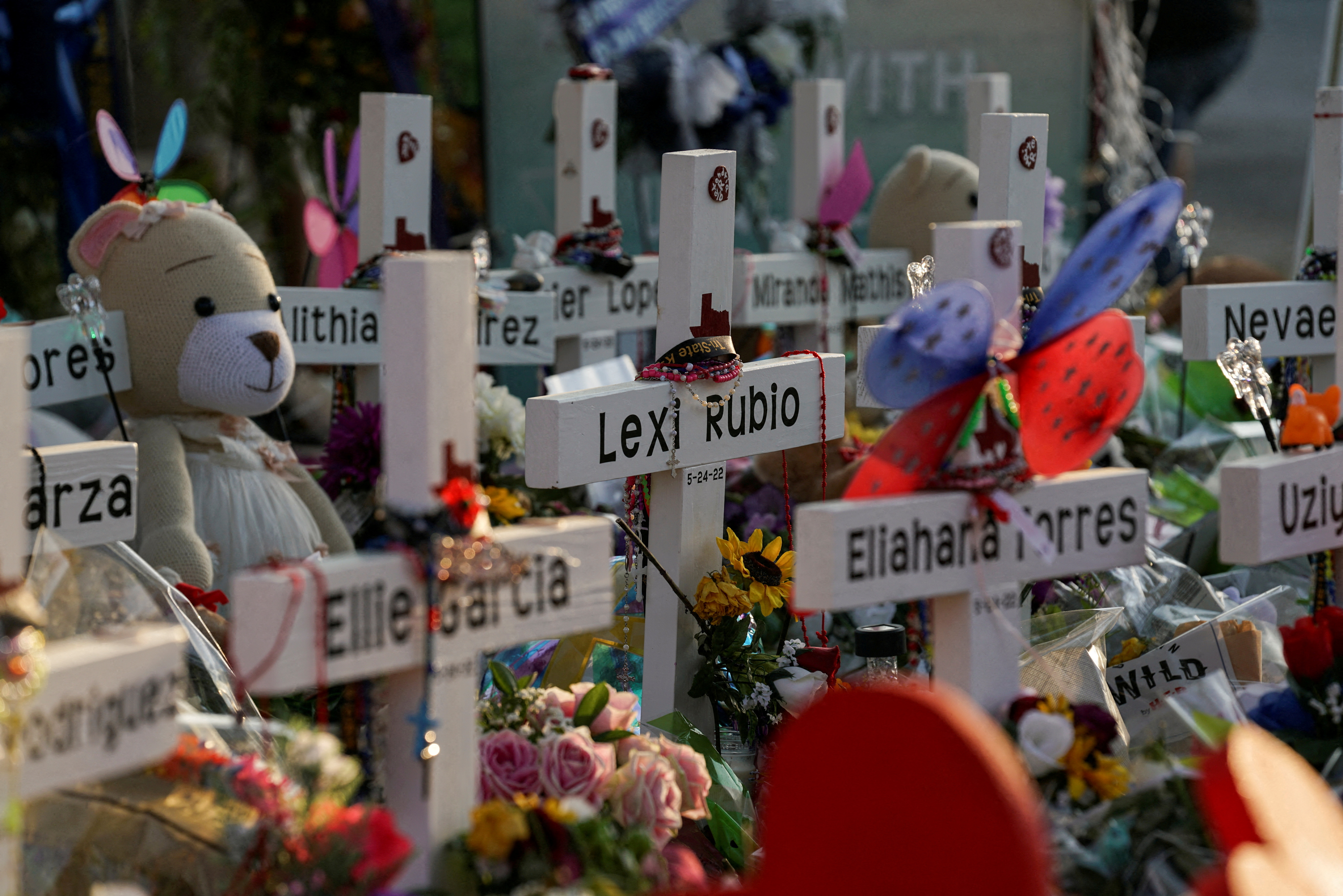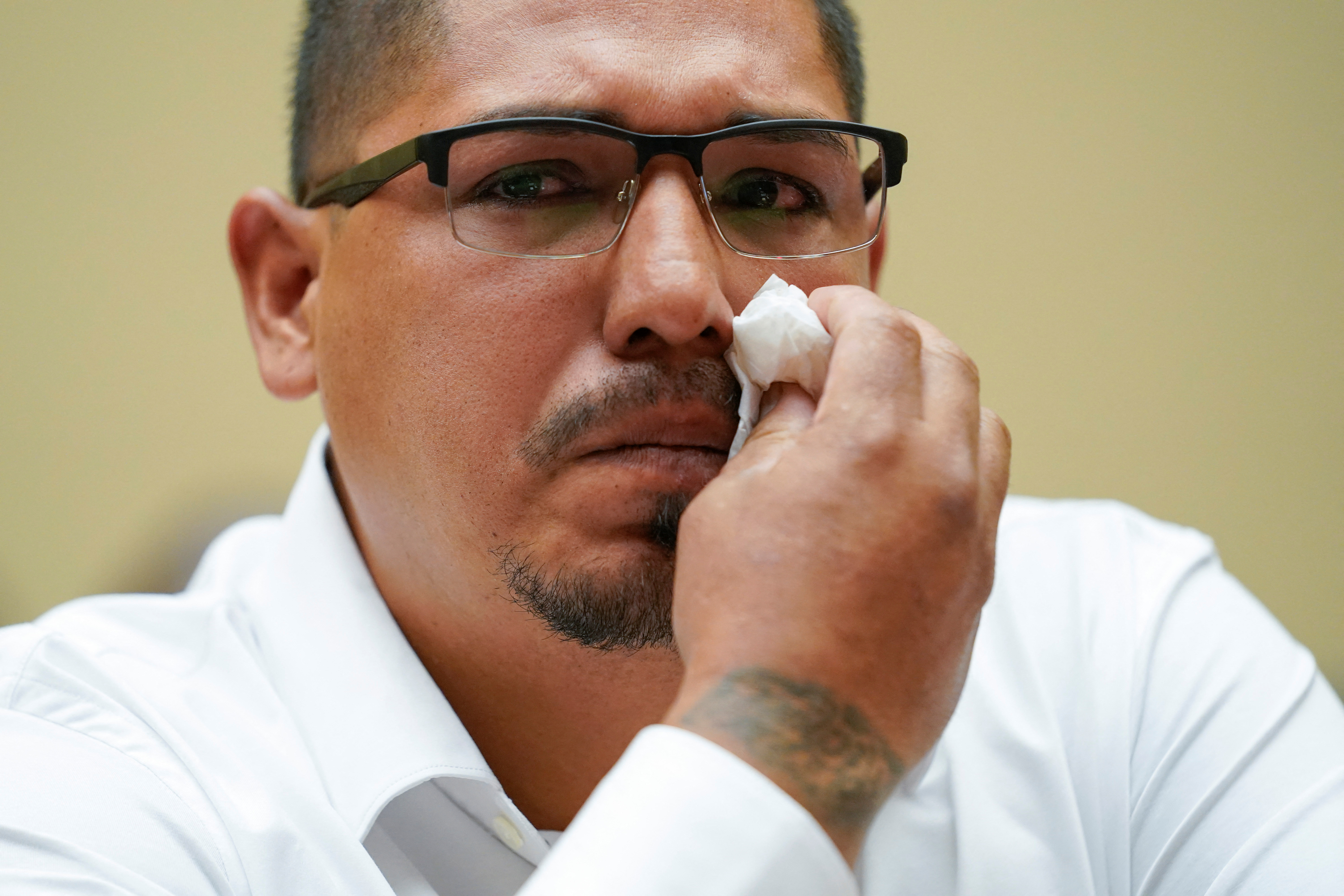
The Texas school police chief criticised for his actions during one of the deadliest classroom shootings in US history has said that he did not consider himself the person in charge as the massacre unfolded and assumed someone else had taken control of the law enforcement response.
Pete Arredondo, the police chief of the Uvalde school district, in an interview published on Thursday told the Texas Tribune that he intentionally left behind both his police and campus radios before entering Robb Elementary School.
“I didn’t issue any orders,” The Texas Tribune quoted Arredondo as saying. He added: “I called for assistance and asked for an extraction tool to open the door.” The doors to the two classrooms were locked, the Texas Tribune reported.
“The only thing that was important to me at this time was to save as many teachers and children as possible,” Arredondo said, according to the Tribune. But first he wanted a key.
The Texas Department of Public Safety (DPS) said days after the shooting that as many as 19 officers waited about an hour in a hallway outside classrooms 111 and 112 before a US Border Patrol-led tactical team finally made entry.

More than a dozen of the children and at least one teacher was alive inside the classrooms for more than an hour as the officers stood in the hallway, The New York Times (NYT) reported Thursday, citing documents and a review of video footage.
DPS officials have said that Arredondo made the choice to hold off on sending officers in to neutralise the gunman, believing the immediate threat to students inside had abated after an initial flurry of gunfire in the classrooms.
Arredondo’s interview comes amid sustained public criticism over law enforcement’s response after the gunman entered the school and shot dead 19 children and two teachers. The massacre has reignited nationwide debate over the role of policing in schools and spurred calls for stricter gun laws.
On Tuesday and Wednesday, parents of victims and survivors of gun violence, including in Uvalde, testified before a Congress committee as legislators worked to strike a bipartisan agreement on gun safety measures in the aftermath of back-to-back mass shootings in the country. But legislation has little to no chance of becoming law amid staunch resistance from Republican leaders.
Law enforcement and state officials have struggled to present an accurate timeline and details of the shooting. They have also made frequent corrections to previous statements, and no information about the police response has been formally released by investigators since the days that followed the attack.
In the more than two weeks since the shooting, Arredondo’s actions have come under intensifying scrutiny from both state officials and experts trained in mass shooting responses.
Documents seen by the NYT show police waited for protective equipment as they delayed entering the campus, even as they became aware that some victims needed medical treatment, the paper reported.
According to documents obtained by the Times, a man who investigators believe to be Arredondo could be heard on body camera footage talking about how much time was passing.
“People are going to ask why we’re taking so long,” said the man, according to a transcript of officers’ body camera footage obtained by the newspaper. “We’re trying to preserve the rest of the life.”

Sixty officers had assembled on the scene by the time four officers made entry, according to the report. The two classrooms where the shooting took place included 33 children and three teachers.
Not all the victims were found dead when officers finally went inside: one teacher died in an ambulance and three children died at nearby hospitals, according to the records obtained by the Times, which included a review of law enforcement documents and video that have been gathered as part of the investigation.
The family of Xavier Lopez, 10, said the boy had been shot in the back and lost a lot of blood as he waited for medical attention.
“He could have been saved,” Leonard Sandoval, the boy’s grandfather, told the newspaper. “The police did not go in for more than an hour. He bled out.”
Eva Mireles, one of the teachers who was killed, made a phone call to her husband, a Uvalde school district police officer, during the attack. The documents obtained by the Times show that Ruben Ruiz informed responders on the scene that his wife was still alive in one of the classrooms.
“She says she is shot,” Ruiz could be heard telling other officers as he arrived inside the school at 11:48am, according to the body camera transcript obtained by the Times.
The records obtained by the Times offered other new details, including that the gunman, Salvador Ramos, had a “hellfire” trigger device meant to allow a semiautomatic AR-15-style rifle to be fired more like an automatic weapon, but did not appear to have used it during the attack. Ramos had spent more than $6,000 amassing an arsenal of weapons that included two AR-15-style rifles, accessories and hundreds of rounds of ammunition, according to the documents.
The Times reported that some of the officers who first arrived at the school had long guns, and that Arredondo learned the gunman’s identity while inside the school and attempted to communicate with him through the closed classroom doors.
By 12:46 pm, Arredondo seemed to give his approval for officers to enter the room, the Times reported.
“If y’all are ready to do it, you do it,” he said, according to the transcript.
Arredondo told the Tribune that from the hallway of the school he used his cell phone to call for tactical gear, a sniper and keys to get inside the classroom. He said he held back from the door for 40 minutes to avoid provoking gunfire and tried dozens of keys brought to him, but that, one by one, they failed to work.
“Each time I tried a key I was just praying,” he told the Tribune.







